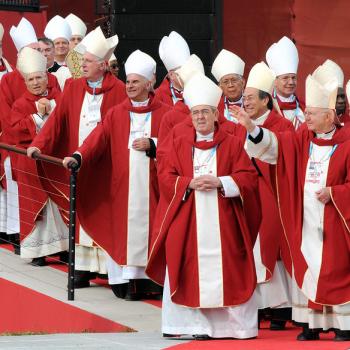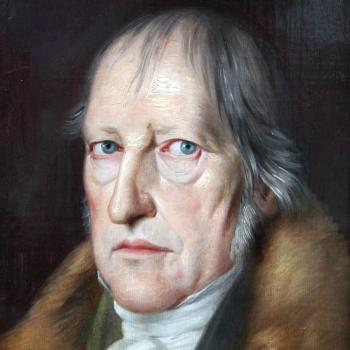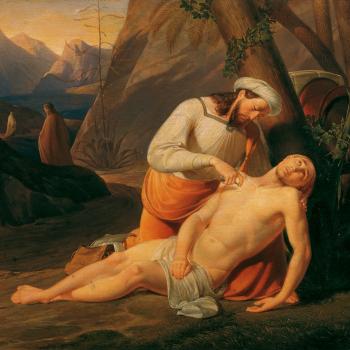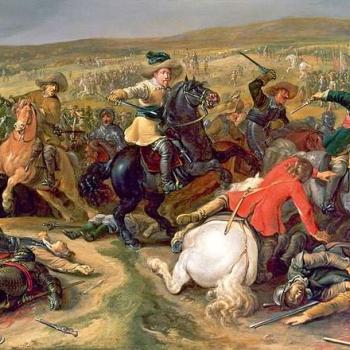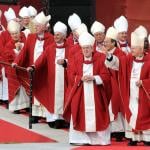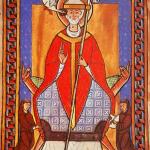I’ve now had an opportunity to research this. I was particularly helped by the wonderful Cranach exhibit last month at the Musée du Luxembourg in Paris. The exhibit included examples of Cranach’s coat-of-arms and the exhibit description makes the following point: “En remerciement de ses loyaux services, Luca Cranach se voit remettre dès 1508 des armoiries, un serpent ailé tenant une bague dans sa gueule qui lui servira désormais de signature.” [In appreciation of his loyal services, Lucas Cranach received in 1508 (from Frederick the Wise) his coat-of-arms–a winged serpent holding a ring in its mouth–which served from then on as his signature] We are also informed that in 1537, following the death of his son Hans, Lucas Cranach modified the design of his coat-of-arms, “lowering the serpent’s wings” (Cranach et son temps [Paris: Beaux Arts/TTM, 2011], p. 65).
Viewing the serpent as a dragon, one has a strong tendency to see it as alchemical symbolism. However, contemporary dictionaries of the subject (e.g., the standard Dictionaire hermetique [Paris, 1695]) and modern authorities (Carl Gustav Jung) present the alchemical dragon or serpent very differently: as the ouroboros which eats its own tail, or as an uncrowned dragon symbolising the element mercury).
It is therefore far more productive to view the coat-of-arms from a straightforward heraldic standpoint. Rietstap’s Armorial Général (2d ed., 1884) includes a listing for the Cranachs, describing the coat-of-arms as consisting of a crowned serpent with bat’s wings, holding in its mouth a golden ring with a ruby. A variant (apparently used by later generation Cranachs) consisted of a serpent surmounting a crown of thorns.
But why the particular symbolism chosen or employed by Cranach himself? Here, we are strongly warned as a general principle in interpreting heraldic figures to avoid simplistic equivalents or easy allegory. Symbols are often chosen for aesthetic reasons, not with any attempts at profundity or classical/theological reference. Emile Gevaert’s marvelous L’Héraldique: son esprit, son langage et ses applications (Paris: Editions du Bulletin des Métiers d’Art [ca. 1920]) offers some assistance. A serpent can symbolise “prudence” and at the same time “desire” (p. 362). (Here, I am immediately reminded of the arms of the Aldine printing house in Renaissance Florence, consisting of an anchor and a dolphin, to carry the idea of simultaneous solidity and progress. Note also that Cranach’s serpent is given wings, making it not just an earthly beast but at the same time a dynamic, heavenly creature.) One thinks inevitably, as well, of the biblical reference to serpents as “wise” (Matt. 10:16).
As for the addition of a crown or diadem (uncommon on a heraldic serpent), its presence generally signifies that the arms belong to a “household of eminence”–and “a crown surmounting a figure seemingly indicates a power which the bearer does not derive from himself” (Gevaert, p. 210). In the case of the Cranach arms, the latter point could remind the observer that Cranach received the grant from his prince–or (since any legitimate coat-of-arms results from a grant and is not the personal creation of the bearer) it might represent Cranach’s Refomation belief that he is saved and receives his talents by God’s grace, not through any personal capacity or efforts on his own part. The golden ring in the serpent’s mouth could perhaps reinforce this interpretation, since a ring, like a circle, represents eternity theologically, and gold is the colour not just of nobility and richness but also of faith and divinity (= God). The ruby on the ring could represent “the pearl of great price,” i.e., the gospel.
Beyond this I cannot go. It would be important to check any surviving Cranach correspondence, particularly in the years surrounding 1508 and 1537, to see if by chance Cranach himself interprets his coat-of-arms–as Luther does in his oft-quoted letter to Lazarus Spengler (see my Heraldic Aspects of the German Reformation (Bonn: Verlag fuer Kultur und Wissenschaft, 2003).
JWM







